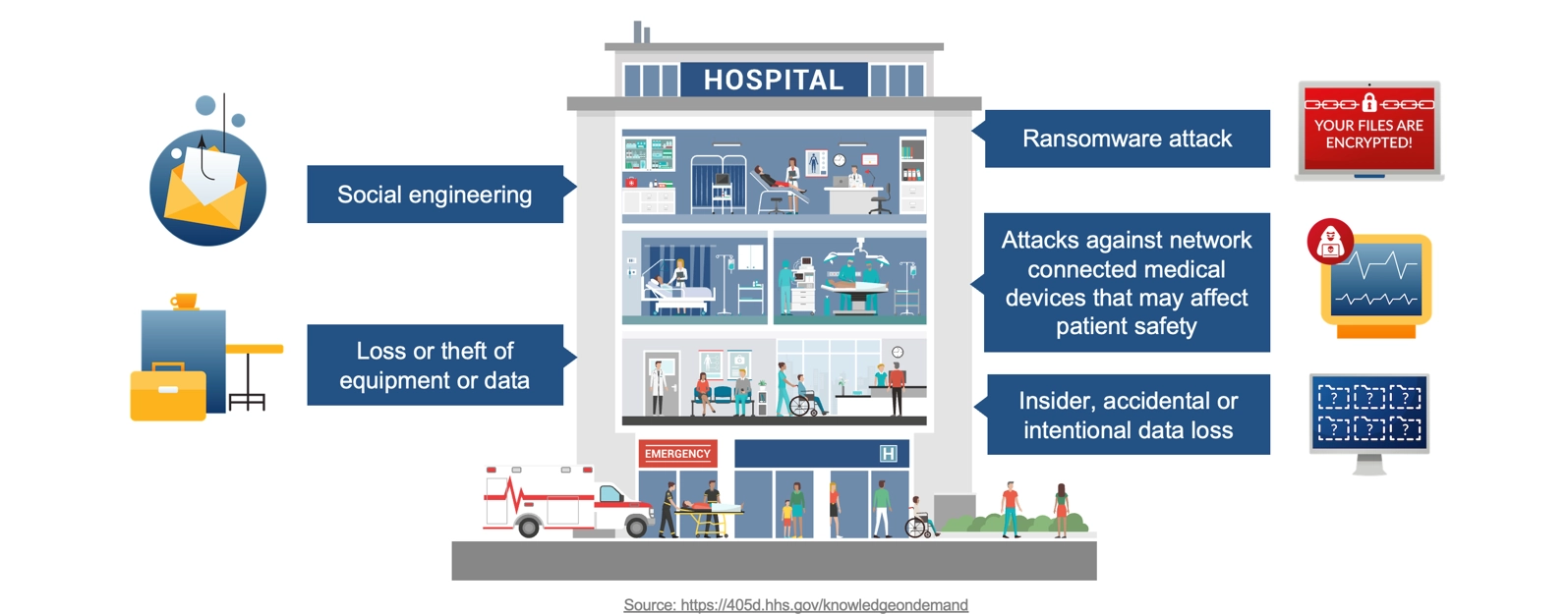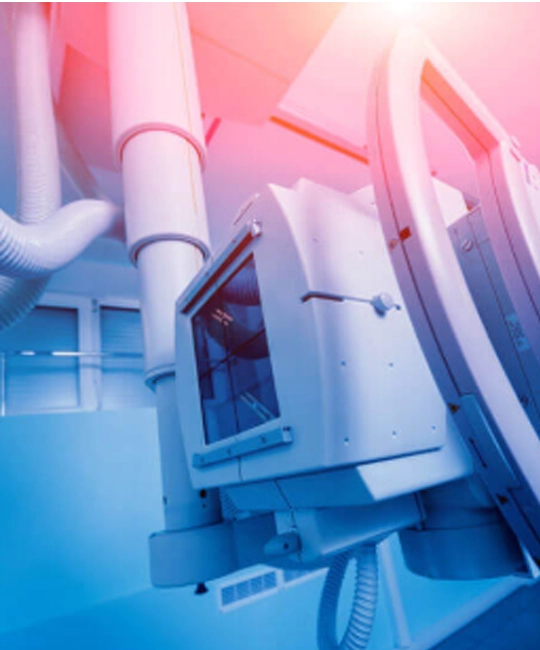The healthcare industry is no stranger to the escalating variety of cyber threats. From significant financial losses and organizational reputational damage to the dire implications for individuals whose data is compromised, cyberattacks represent a complex blend of challenges. Acknowledging this harsh reality, healthcare leaders are stepping up their cybersecurity investments and shaping their strategies to counter both internal and external threat landscapes.

Several government standards organizations require or recommend active defense and deception, including
- The 2023 National Defense Authorization Act
- NIST SP 800-172,
- The CISA 2022 – 2026 Strategic Technology Roadmap
Use cases for deception-based Active Defense in healthcare
The HHS identifies the top threats targeting healthcare. Acalvio’s ShadowPlex Advanced Threat Defense and Identity Protection solutions offer a proven approach to protect healthcare organizations from cyberattacks. With no agent requirements, ShadowPlex guarantees easy deployment across healthcare enterprises. Pre-integrated with platforms like EDR, SIEM, and SOAR, ShadowPlex ensures interoperability with the enterprise ecosystem and provides healthcare-specific deception templates and strategies, ensuring immediate value

Acalvio Healthcare Protection Solutions
By overlaying the organization’s computing environment with decoys that lure attackers away from real data, cyber deception not only confuses the attacker but also alerts security teams about every move they make.

Medical device attacks
Decoys representing medical devices detect threats and prevent attack propagation while protecting the real devices.




Acalvio Advanced Threat
Defense and Identity Protection
for Healthcare Organizations
Healthcare security is marked by an escalation
of cyber threats, which contain a diverse range
of challenges. These include financial impacts
from cyberattacks, organizational and
reputational damage, and personal bearings on
individuals whose data is compromised. The
economic toll of healthcare cyberattacks can be
significant, with breaches costing organizations
millions, alongside the potential for litigation
from affected parties. Healthcare leaders are
increasing their cybersecurity investments to
counter these threats, focusing on internal and
external threat environments.
FAQs
What are the top cybersecurity threats in healthcare?
How does cyber deception strengthen healthcare cybersecurity?
What makes Acalvio ShadowPlex ideal for healthcare organizations?
What regulations support the use of deception in healthcare cybersecurity?
How can Acalvio’s solutions prevent ransomware attacks in healthcare?
Why is cybersecurity in healthcare a critical investment?
Next Steps
Explore our patented technologies to enable Active Defense and Identity Security in your enterprise.


